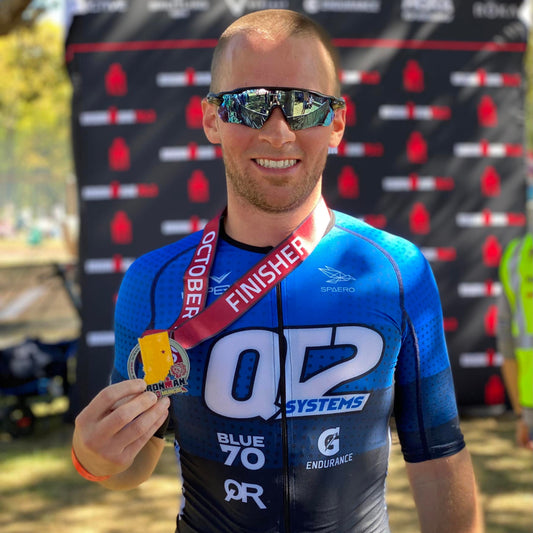Rest in peace old friend…I know nothing of the man, other than what was available, to me, on Wikipedia. He was an author, and he died in 1936. I didn’t get much further than that. Having said that, he helped me to, in a single line, sum up what coaching is really all about. At least to me, and all of us at QT2 Systems, OutRival Racing, The Run Formula, and The Cycling Formula.
I was about 65 minutes into a 75-minute ZWIFT run, and somehow ended up deep down within a rabbit hole of You Tube videos. I was listening to an interview with a deceased American author (not Finley Peter Dunne), whose writing is far too challenging for the likes of me, but possessed a perspective and mindset that I have come to appreciate. He was speaking to the importance of reading fiction, because of the way(s) in which it allows us the opportunity to enter into the depths of the minds of the characters, and in many instances, the author. In essence, it affords us the opportunity to take a look ‘under the hood’, and see what we would never normally have an opportunity to see. Namely, how someone’s thinking, other than our own, works. Be it true or false, real or fake, it is closer than we ever come, otherwise. I’m not really much into fiction, but I was pretty deep down the You Tube hole, so I got what I got…
Anyways, this is all well and good, but what is my point? The author who was being interviewed, in describing a role of fictional writing, quoted some guy named Finley Peter Dunne. Apparently, Mr. Dunne once said that “Stories are meant to comfort the afflicted, and afflict the comfortable.”
For some reason - I don’t know why - this resonated with me. I knew that I had promised Beth that I would write this blog post, and had kind of queued myself up to write about something completely different, but in the final five minutes of my run, decided that this was more interesting. Again, to me, at least…
Upon reflection, and while watching the Patriots play some horribly undisciplined football, I came to the realization that I could replace the word “Stories” with “Coaching”, and the word “afflicted” with “disturbed”…No…With “upset”…No, not that, either…With “challenged”…That’s the ticket! If I did that, that line which had originally resonated with me, for reasons I didn’t understand, all of a sudden had relevance. “Coaching is meant to comfort the challenged, and challenge the comfortable.”
Hopefully my point is starting to become a little more clear. But, in case it’s not…
Our role(s) as coaches is/are very dependent upon who we have in front of us, but essentially boils down to that one line. Sometimes it is our job to help those who have all of the tools, skills, and talents, but struggle to piece them all together, to…Piece them all together! In short, to comfort the challenged.
At other times it is our job, as coaches, to help those who have everything pieced together, to find new challenges, upon which they can improve. To shake their tree, and see what lowest-hanging fruit reveals itself. To challenge the comfortable.
Naturally, we must sometimes decide between both of these options. Some athletes have, both, challenges that need comforting, and comforts that need challenging. Seemingly frustrating. But, I would argue just the opposite. Oftentimes, it is in these cases where the greatest potential exists. It is our vision that is charged with finding and harnessing that potential. Hence, why we are paid the big bucks…
In the end, if you boil it down to its nittiest and grittiest bare bones, in order to see true improvement, over time, the coach and athlete must exist in a never-ending loop of identifying limiters, working to remediate them, and then finding new ones to remediate. Rinse…Repeat…Rinse…Repeat…Ad infinitum…
The specifics as to how this is done? Well, that is probably a topic for a different post, by someone else. But as it exists in my mind, there are three very important perspectives which require constant monitoring. The 30,000 foot view allows the coach to identify whether the athlete is afflicted or comfortable. Essentially, do they need comfort or challenge?
While this is going on, there is another perspective, the 15,000 foot view, which considers which strategies will best comfort or challenge the athlete. Will this athlete respond well to muscle tension work, in order to build strength? Is this athlete a candidate for work with a sports psychologist? Does this athlete require a heavily focused period of cycling, or swimming, or running, in order to maximize their upcoming season? Does this athlete need to engage in a confidence project, in order to address issues of self-doubt, which are proving to be a limiting obstacle in accessing their physical talents? The strategic options are endless. The 15,000 foot view helps the coach to see which may be most applicable to the athlete in question.
And, lastly, our ground-level view, which is where the rubber actually meets the road. This is where the actual day-to-day comforting or challenging comes into play. Where we apply the 15,000 foot strategies, and assess whether or not they are working as intended. This the view where we typically find ourselves, in working with athletes, and it is very, very easy to get stuck here. To get consumed by the ‘fog of war’, so to speak, getting bogged down by actuality, and losing sight of our 15,000 and 30,000 foot views. At the ground level we have to be careful not to over-invest in any single strategy, only to find ourselves caught in a quagmire. It is of the utmost importance that we readily identify when a 15,000 foot strategy is proving inadequate, and adjust our sails towards one of the many other strategies in our quiver. By the same respect, we must know when to maintain focus, and identify when a 15,000 foot strategy isn’t working…yet. Maybe it just requires a little more time, and is worthy of our patience. The ground level is a difficult place to exist, because it doesn’t come with the wisdom of the broader perspectives. At the same time, it can be the place of greatest reward, because it is where the true impacts are made, and bonds forged.
Wherever we find ourselves, at ground-level, 15,000, or 30,000 feet it is important to maintain a regular inventory and connection with the other two perspectives. In this way, we are able to recognize where we are headed, what is working, now, and meld it with that which has worked in the past. This is a pathway towards credibility with our athletes, and helps them to remain as invested in us, as we are in them.
Well, that’s all I’ve got!
Ironically, and most interesting to me, this little blog post unintentionally gave you a small window into my mind, and how it worked to develop the transformation of a randomly happenstance quote, into something that is relevant, to me, and, if you have read this far, perhaps you as well. Somehow, that seemed the whole point in the first place.
This post was written by QT2 Level 3 Coach and Operations Director, Tim Snow.





